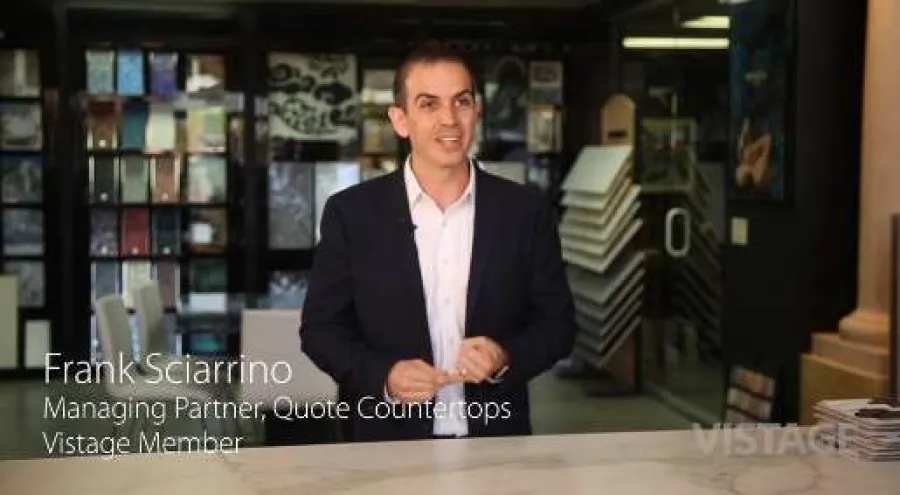Vistage Executive Leadership Program
Vistage is collaborating with Stanford Graduate School of Business to provideMBA-level courses delivered online and then applied through a Vistage groupexperience.
Executive Leadership Program
Courses

Course 1: Strategic Leadership
Learn how to create and apply strategic frameworks for innovation.
- Clearly articulate your organization's strategy, identify when the strategy needs to be updated, and implement successful strategic changes.
- Evaluate the logic of your organization's strategy
- Apply frameworks to analyze your organization's capabilities & positional advantages
- Create a plan to increase innovation within your organization

Course 2: Organizational Design
Design an organizational structure to facilitate innovation and growth.
- Learn a framework for thinking about the organizational ecosystem
- Learn how to use a human-centered design process to effectively diagnose the causes of very common organizational problems.
- Understand the interplay between formal structure, routines, informal networks and culture in shaping organizational performance.

Course 3: Innovation Playbook
Inspire and mobilize your community through the power of storytelling.
- Analyze how leaders use personal stories to build high-performing teams, build global brands, and lead companies
- Examine behavioral research and the design thinking process to glean insights for defining your personal and business stories
- Apply skills to build and tell stories related to yourself and your own organization to align stakeholders and drive innovation
Meet the Professors

Jesper B. Sorenson
Strategic Leadership

William P. Barnett
Strategic Leadership

Sarah Soule
Organizational Design

Jennifer Aaker
Innovation Playbook
Program addresses core member questions
- Do we have a strategy or do we have a plan? Why does it matter?
- How relevant is our current strategy? How well does it respond to the current and future environment?
- How do we know if our organization is designed to carry out our strategy? How do we know how to design it to be more effective?
- How clear is our strategy to the Executive Team? To the rest of the staff? To our other stakeholders?
- How quickly can I apply what I am learning to my organization? How relevant is this?
Designed to fit within a CEO’s busy schedule
- Timeframe: A series of three 8-week courses, averaging 5-7 hours of high-impact learning per week.
- Anytime Anywhere Access: Stanford courses are provided through a flexible online platform, providing access whenever most convenient.
- Vistage Workshops: Unlike other executive education programs that are "learning in theory" and leave implementation at risk, this program has weekly workshops with a group of other Vistage members, and facilitated by and expert Vistage Chair, to drive real change in your business.
- Expert Insight: Each course includes 3 live webinars as well as written feedback on assignments by Stanford's teaching team.
Lifelong Learning
Lifelong Learning: They had always made it a goal to learn & apply sound strategic
frameworks, and the Vistage-Stanford program lined up perfectly with these goals.
Formal Education
Formal Education: They had started their businesses without much formal education, but
felt that now was the right time to fulfill this promise to themselves.
At Just the Right Time
At Just the Right Time: They were working on a specific innovation or new strategy, and
vetting it through this program seemed like a great way to fine-tune their plans.
Need for Sustainable Innovation
Need for Sustainable Innovation: They wanted to build an organizational culture where
everyone was pursuing the goal of sustainable innovation, and the Vistage-Stanford
program would equip them to do so.
Imposter Syndrome
Imposter Syndrome: They were learning the CEO role and felt insecure or ill-equipped to
make large strategic decisions.
Stuck in a Rut
Stuck in a Rut: They realized they weren't spending enough time building a coherent
strategy, and knew they needed to sharpen their skill-set to make significant progress.
February 2021 Cohort
- Next Cohort: Begins February 2021
- Cost: $16,800 for 3-course series*
- Certification: Joint Stanford GSB/Vistage Certificate of Completion for each course
| Dates |
Course |
|---|---|
| Feb 10 - Apr 6 | Strategic Leadership |
| May 5 - Jun 29 | Organizational Design |
| Aug 4 - Sep 28 | Innovation Playbook |
*Reflects 20% savings vs. single-course option, priced at $7,000 each.
At the end of the program, participants will...
- have optimized (or even radically upgraded) their business strategy.
- have their own playbook of strategic frameworks and innovation tools that they're implementing in the real world.
- have a better-shaped organization to deliver innovation and growth.
- be able to tell stories that capture the imagination of customers, employees and investors, with a potency that is contagious.
- have a globally-recognized Stanford certificate of completion for each course.
Member Results
- CEO of a countertops company discovers new opportunities for transforming his commodity business into a technology platform
- Second generation restaurateur redefines sustainable competitive advantage and launches a catering subsidiary
- Consultant repositions his value proposition and has the most successful year in history
- Non-profit with a vision to end homelessness redefines its strategy, rewrites their story, and wins a $10M grant




